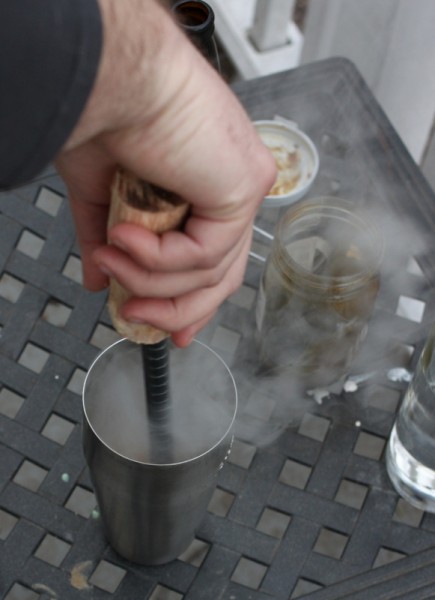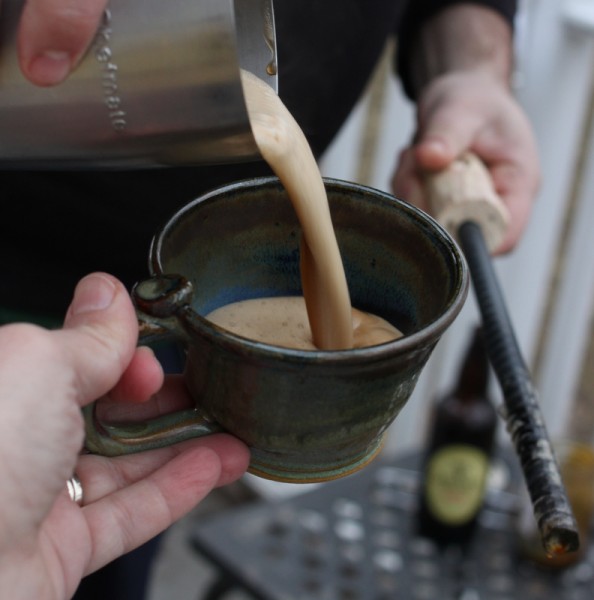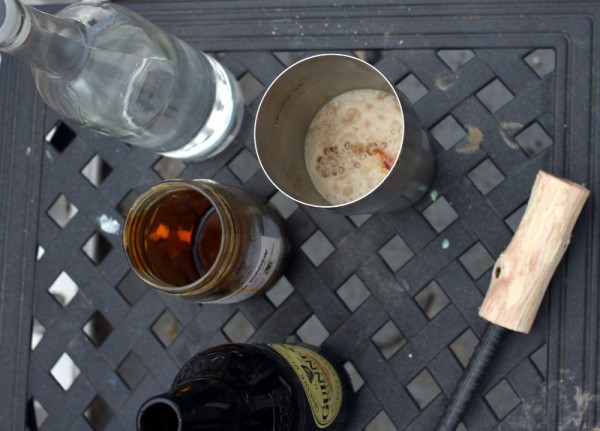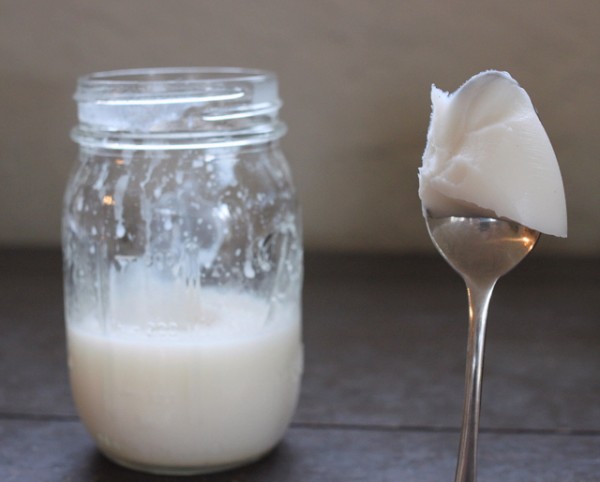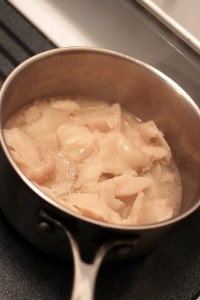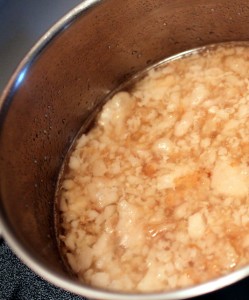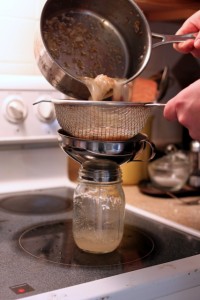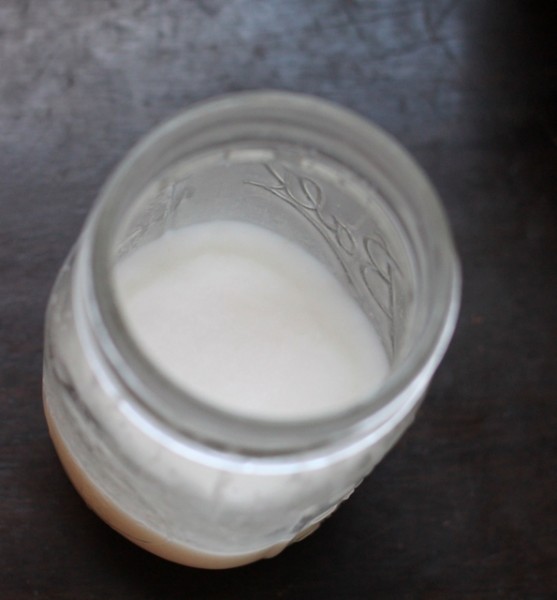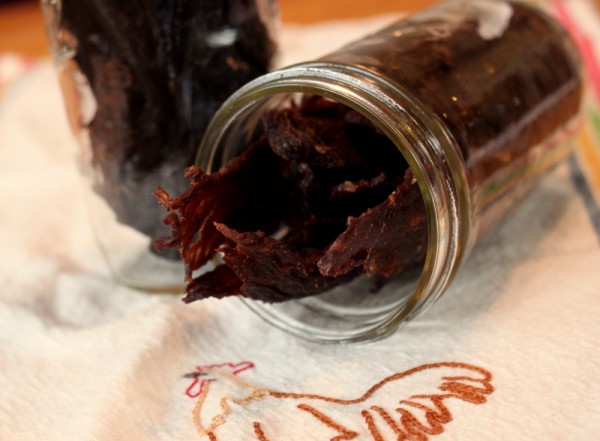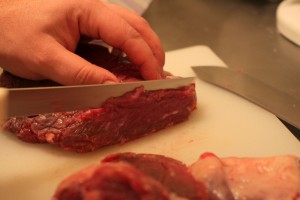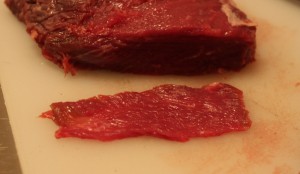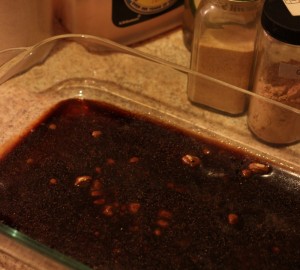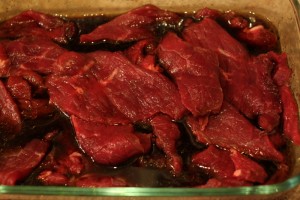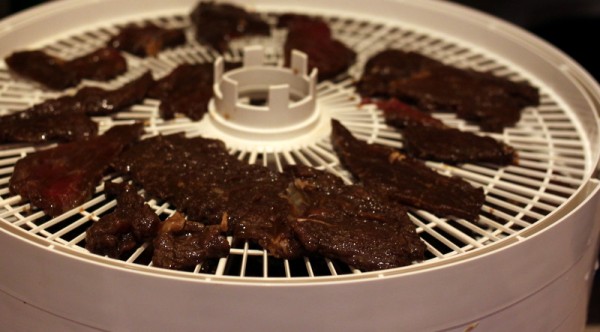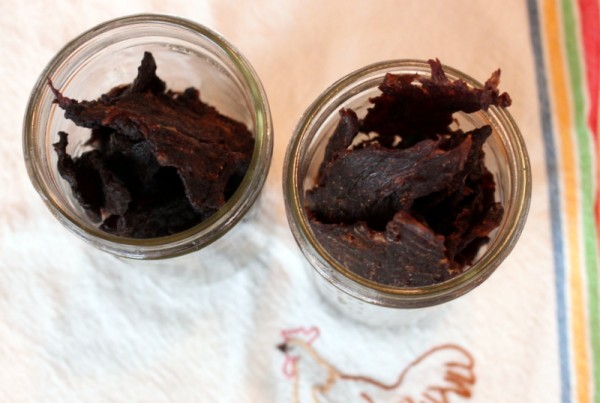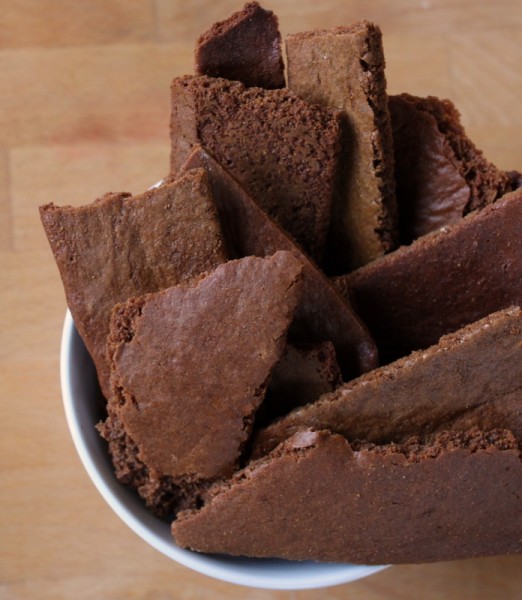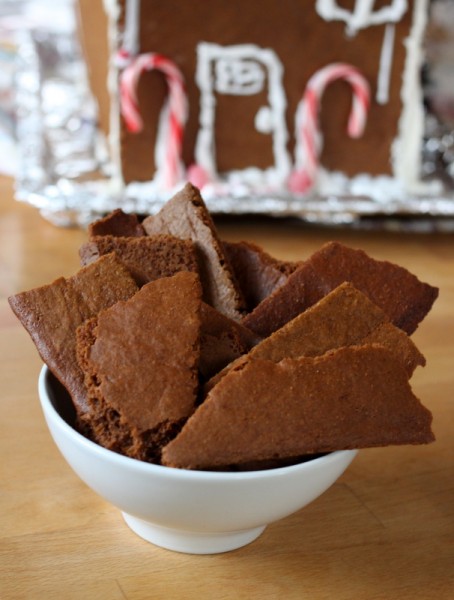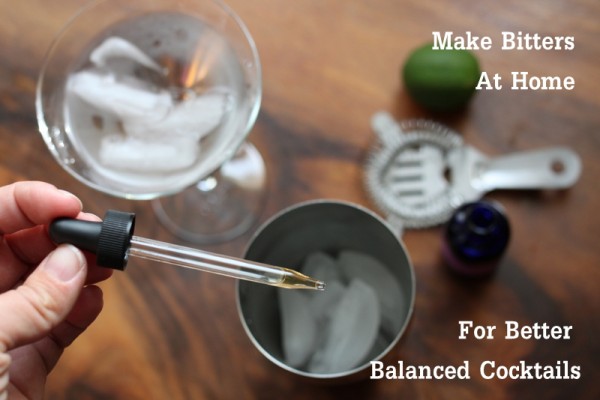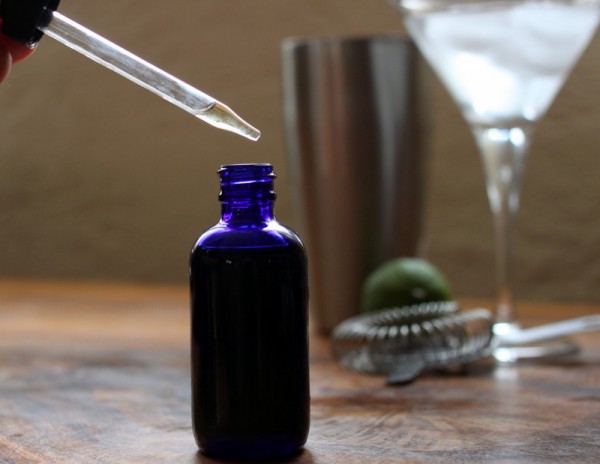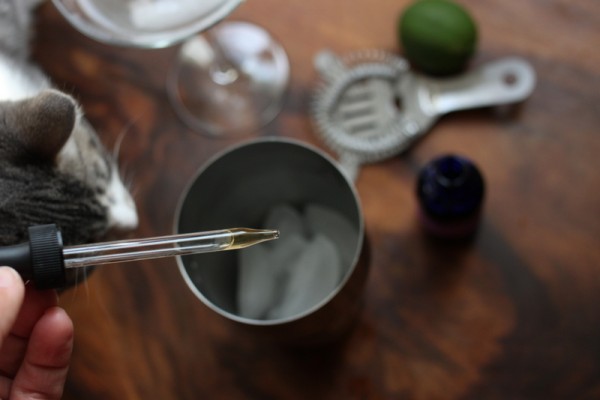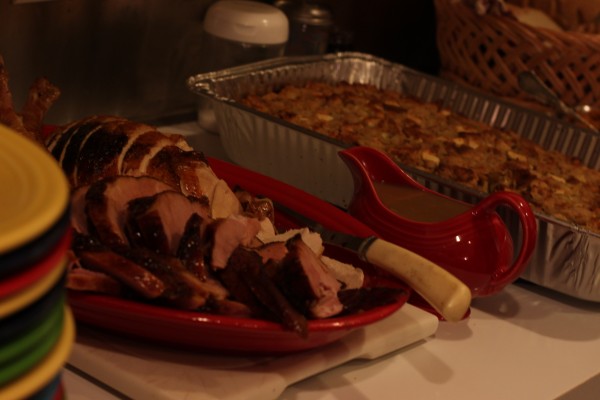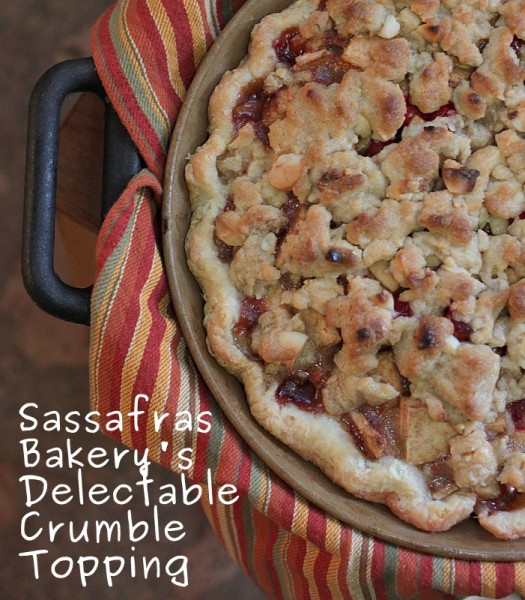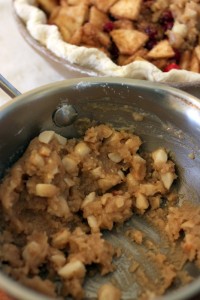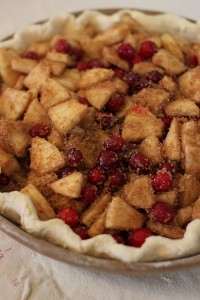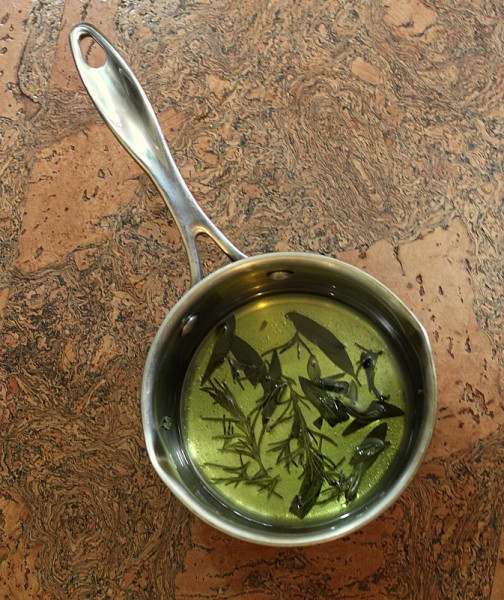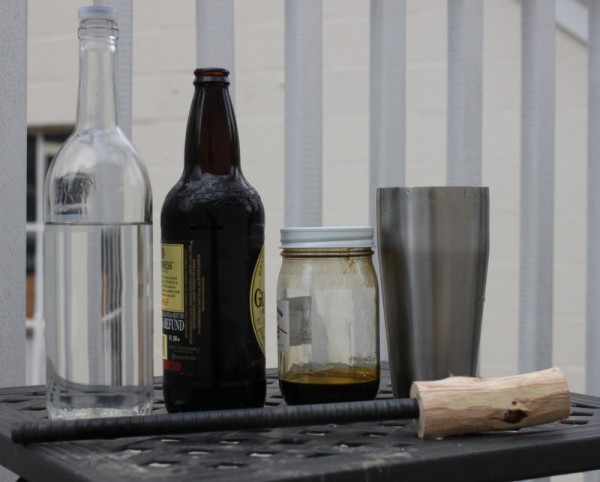 There may be only a few chilly nights left this season, so I'm going to cut right to the chase: before winter ends, make a traditional flip.
There may be only a few chilly nights left this season, so I'm going to cut right to the chase: before winter ends, make a traditional flip.
This historic cocktail was the most popular drink in taverns in Colonial America yet seems to be lost even in the current mixed drink renaissance. It combines the original American spirit, rum, stout beer, whatever local sweetener available like molasses, sorghum syrup, or maple syrup, and firey heat.
To heat the drink, bartenders use a loggerhead. This wooden-handled, blunt metal tool sits in a fire until red hot and is then plunged into ingredients in a pitcher, creating a fizzy textured, warm, highly alcoholic beverage. After too many rum flips, patrons might argue and brandish the heat element against each other, hence the phrase 'at loggerheads'.
Alex learned of the flip while reading And a Bottle of Rum: A History of the New World in Ten Cocktails
The project started by making a loggerhead from a piece of hardware-store rebar and a branch. Because we have no wood stove in the new house yet, we used a propane torch to heat our loggerhead. A wood-fire-heated element would probably contribute ashes to the drink, which would certainly uphold tradition if not modern standards of good taste. The foamy, sweet, dark drink warms us on these last snowy days of winter.
But what about the modern flip cocktail, you say? The one with egg whites? Historical records show price controls on taverns that made the rum flip cost the same price everywhere. To distinguish themselves, barkeeps began customizing their flip with additional spices, cream, or, as was the case at a popular place in Boston, eggs. Sometime since then, we lost the heat and yolk, leaving the modern egg white flip.
Despite signs that spring is coming, surely there will be a cool night ahead where you wish for a strong hot drink like the flip. It could even be adapted with Irish whiskey and stout for a warming St. Patrick's Day beverage.
Rum Flip makes one quart-sized pitcher to serve four
heat-tolerant quart-sized or larger pitcher 3 ounces rum (white is traditional but any rum is fine) 2 ounces molasses, sorghum syrup, or maple syrup one pint stout beer, warmed to room temperature (bottle conditioned, not nitro-carbonated) loggerhead (fireplace poker is a reasonable substitute, as clean as you wish) heat source (propane torch, campfire, wood-stove)
1. Mix rum and sweetener in pitcher, stirring well to dissolve. 2. Pour in beer and stir again gently. 3. Meanwhile, heat loggerhead until red-hot. 4. Plunge loggerhead into pitcher. Have a towel handy to mop up any overflow. 5. Pour into mugs and drink warm.

